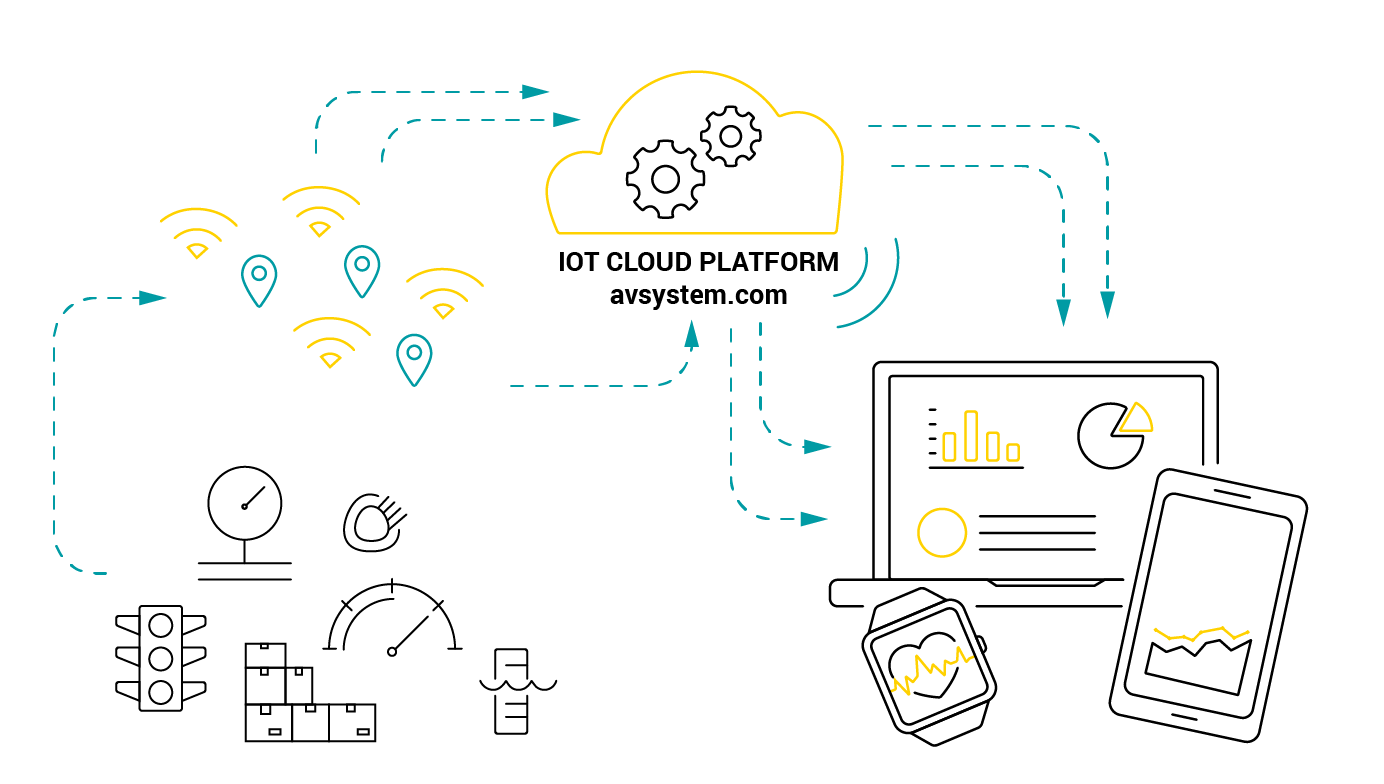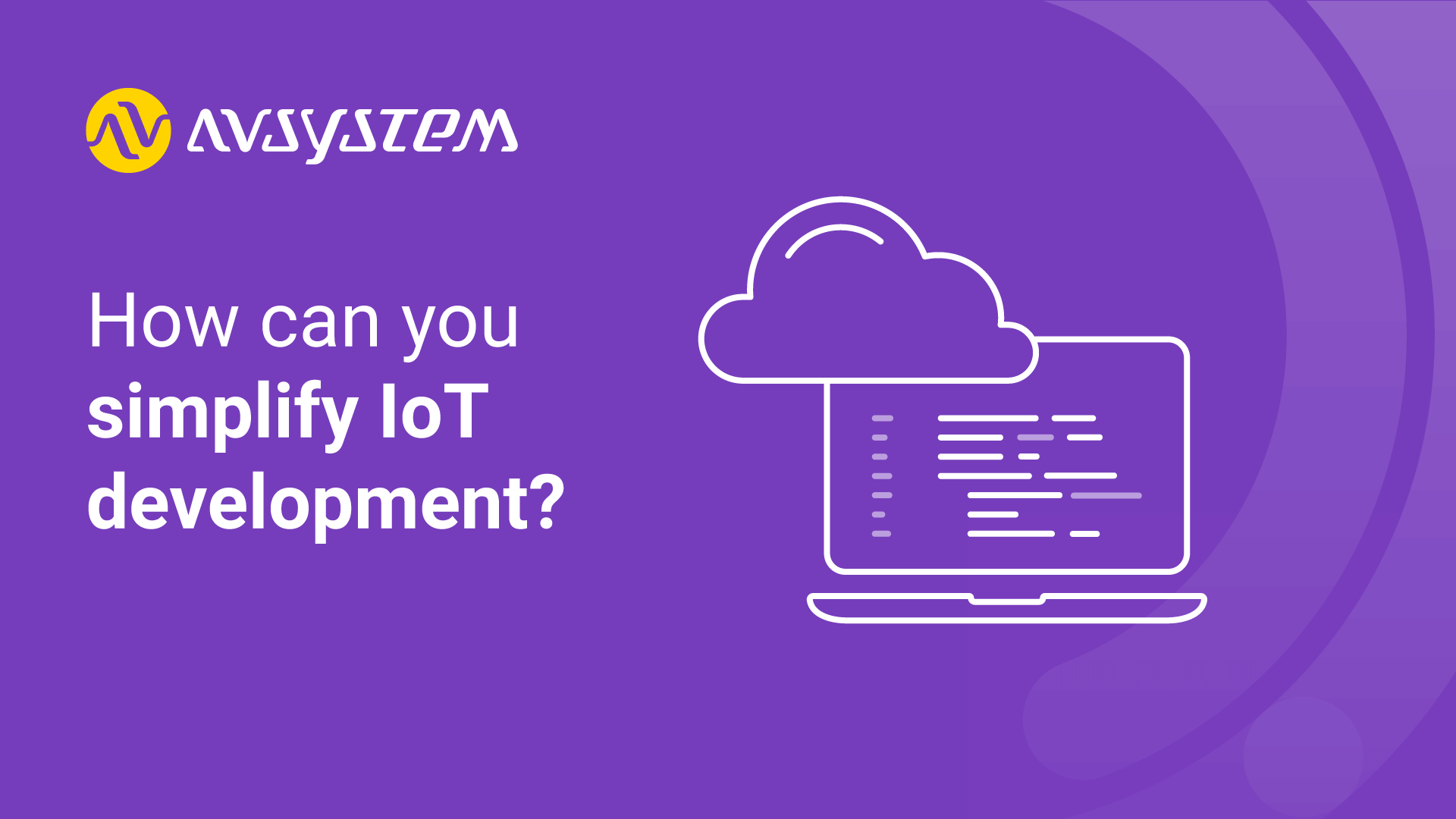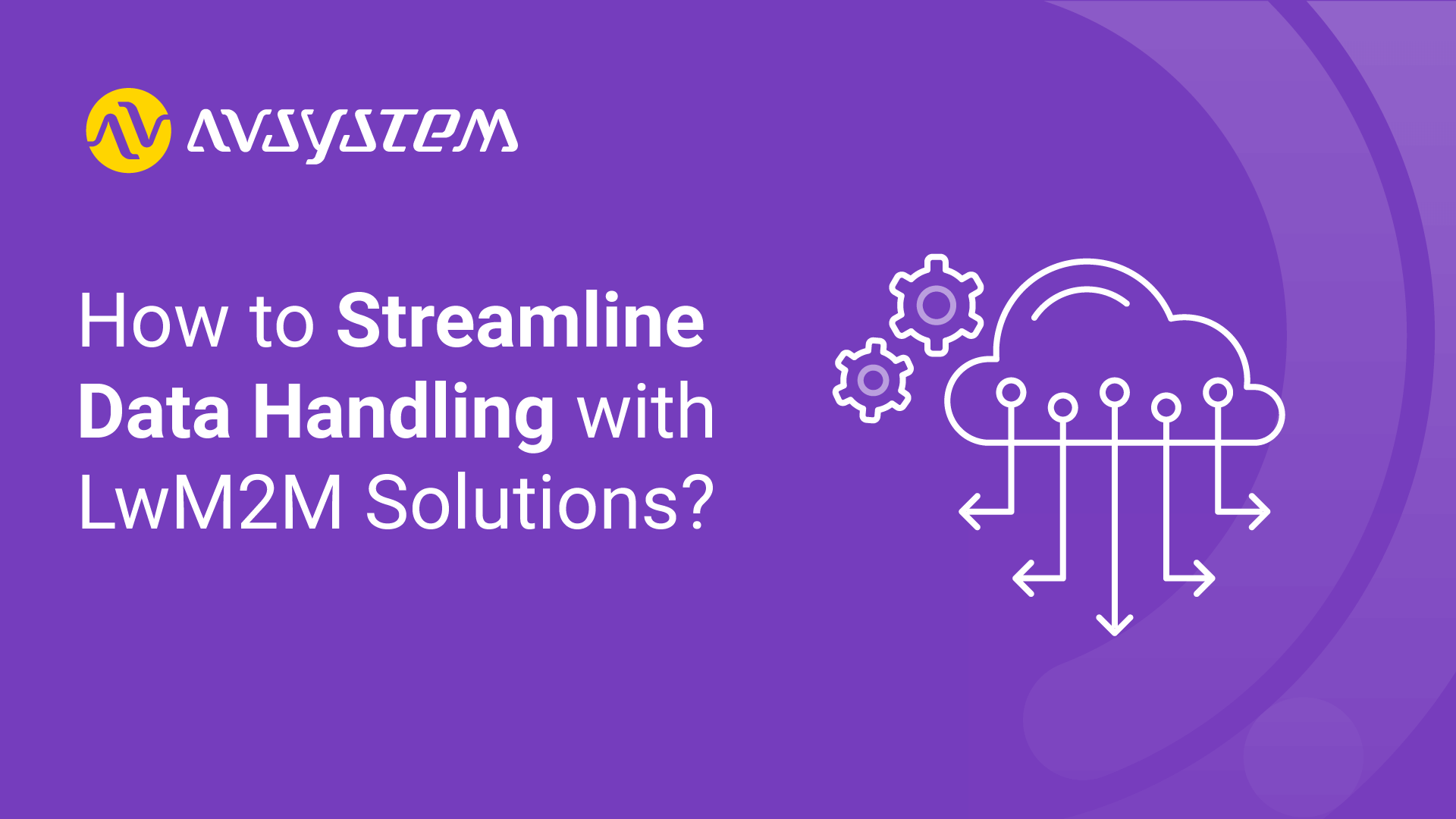Benefits of a cloud platform in the IoT

An IoT cloud platform is where the capabilities of IoT and cloud computing tech stacks come together to bring forth added value for consumer and business applications alike.
Indeed, the growing adoption of cloud services has fuelled the development of the Internet of Things in many sectors of business where developing on-site IoT architecture can be very expensive – keeping your data in the cloud lets you reduce the costs and has a number of other advantages. Yet, before having a look at what makes a fine IoT cloud solution, we should consider the two basic elements that it rests on: an IoT platform and cloud computing.
What’s in an IoT cloud platform?
In an endeavour to bring physical objects online and make them communicate, cooperate and act intelligently without human intervention, the Internet of Things relies on IoT platforms to enable provisioning, management, and automation of smart objects within a given IoT infrastructure. Generally speaking, each IoT environment is a mashup of technologies by various vendors that form a complex and inherently diverse ecosystem which, without a common base for their integration, would stay fragmented, ‘dumb’, and, ultimately, unable to function. Therefore, it can be said that an IoT platform provides a ‘meeting point’ for all the connected devices and serves to collect and handle the data they deliver over the network.
At the other end of the Internet of Things cloud solution, there is cloud computing. Breathing new life into IT services, cloud computing is the latest technology buzz that has moved consumer and business applications to the web, thus enabling enterprises to optimise their IT performance and reduce costs that would be otherwise bloated by the need of creating and maintaining on-site IT architecture for storing data and running applications. Cloud-based solutions are not only more cost-effective in the long run; they also provide better security, corporate data mobility, increased co-worker collaboration, more advanced disaster recovery solutions, to name only a few benefits. What is more, cloud computing offers more flexibility which helps to shift the company’s focus from IT hosting-related issues towards aspects directly affecting its business bottomline.

These days, when cloud computing is all the rage, it is gradually becoming an indispensable component in virtually any business organisation, regardless of its scale. But before it revolutionised the industry, companies wanting to go digital had no other choice but to establish their own in-house IT infrastructure, with all the servers, hardware and software that needed to be set up, maintained upgraded and secured. What all of this meant for any company was, above all, huge investments and a lot of risk. Today, in the case of many IoT-driven enterprises, the choice is an obvious one: establishing a costly, vulnerable and hardly scalable on-site server infrastructure, or picking an IoT cloud-based solution that allows for avoiding unnecessary costs while presenting no major trade-offs on platform functionality. In a number of instances, an on-premise Internet of Things platform can generate expenses that push the whole project to the verge of profitability. With cloud deployment in place, things are becoming entirely different. So, what are the features that make an IoT cloud platform a great solution in many IoT use cases?
Achieve IoT project success faster with our expertise.
Speed up your time to market using LwM2M standardization and pre-built integrations for hardware and the cloud.
Benefits of Cloud Platform in IoT
One of the greatest advantages of placing your IoT system in a cloud is that it is very easily scalable. In case of complex on-premise network infrastructures, scaling up requires purchasing more hardware, investing more time and undertaking increased configuration efforts to make it run properly. In a cloud-based Internet of Things system, on the other hand, adding new resources usually boils down to leasing another virtual server or more cloud space which both usually have the extra advantage of being quickly implemented. Moreover, IoT cloud platform services offer more flexibility in case you want to limit your storage requirements or scale down the number of IoT-enabled devices.
With your data stored and processed in a cloud server, it can be accessed from almost anywhere in the world, which also means that it won’t be bound by any infrastructural or networking constraints. Mobility is especially important when it comes to IoT projects involving real-time monitoring and management of connected devices. While data stored in on-site servers can be only acted upon within the company’s premises, an advanced Internet of Things cloud platform will give you the tools to provision, manage, and update your devices and sensors and process the acquired data remotely and in real-time.
With IoT cloud solutions, it usually takes less time and effort to implement them and significantly lowers the overall cost, but this is achieved at the expense of platform customization. While it is true that Internet of Things systems installed on premises can be more easily fitted for the project’s purpose, they also involve time-consuming deployment of data management and analysis capabilities and upgrades to the company’s existing network structure due to increased data traffic. All in all, cloud-based IoT infrastructure turns out to be more profitable when time to market is a crucial business factor.
Security issues, which have been a major concern for the IoT world ever since its inception, can be a tough one here. In the cloud platform vs. on-premise IoT infrastructure clash, it’s all about responsibility. In case of on-site servers, it lies in the hands of the company and it only depends on the security practices within the organisation if the data is kept safe. Therefore, it is quite understandable that some organisations may feel uncomfortable about giving up control over their sensitive data and passing it to an external party. Yet, there is common agreement among both the service providers and clients that storing and processing your Internet of Things data in the cloud is more secure than keeping it on prem. Thanks to the possibility of regular software and firmware updates as well as 24/7 monitoring offered by some platform providers, major security breaches can be avoided
Large initial upfront investments and increased implementation risk in case of an in-house Internet of Things system can be discouraging. Adding to that, there is the issue of ongoing costs of hardware maintenance and IT personnel. From the cloud perspective, things look better. Significantly reduced up-front costs and a flexible pricing scheme based on actual usage encourage IoT-based enterprises to switch to the cloud. Within this business model, costs are easier to predict and you don’t have to bother about hardware failure, which in case of in-house Internet of Things systems may generate huge additional costs, not to mention business losses resulting from service downtimes.

Conclusion
Leveraging IoT technologies by moving them from centralised local server systems to distributed cloud infrastructure can be beneficial in many use cases. This is especially true in the case of IoT device management, where a scalable, fit-for-purpose and cost-effective Internet of Things cloud-based solution can make all the difference. AVSystem’s IoT Device Management Platform responds to the growing market demand for IoT services hosted in the cloud. With best-in-class security (based on TLS and DTLS protocols), auto-scaling and auto-dimensioning features, cloud-agnostic architecture, along with a flexible pay-as-you-go pricing model, it brings the best IoT cloud platform service not only for deployments involving resource-constrained devices, but also embracing many other industry verticals.
At the end of the day, the profitability of transferring IoT services to the cloud may depend on the requirements and limitations of the specific use case. Nevertheless, this statement doesn’t necessarily collide with the fact that, thanks to providing convenient, stress-free, secure, and comprehensive IoT enablement service, IoT cloud platforms are the trendsetting tech sitting at the forefront of the global IoT revolution of today.
Recommended posts
- How can you effectively tackle the challenges of IoT development?
- IoT communication protocols explained [with measurements for NB-IoT]
- How to Streamline Data Handling with LwM2M Solutions?
Subscribe to stay in the loop with all our latest content:
Recommended posts







![IoT communication protocols [with measurements for NB-IoT]](/media/avssite/news/Communication-Protocols-Comparison_cover_new.png)
